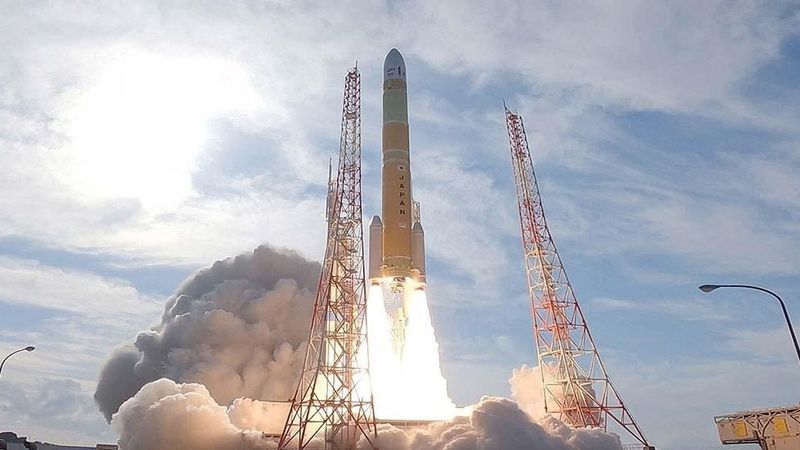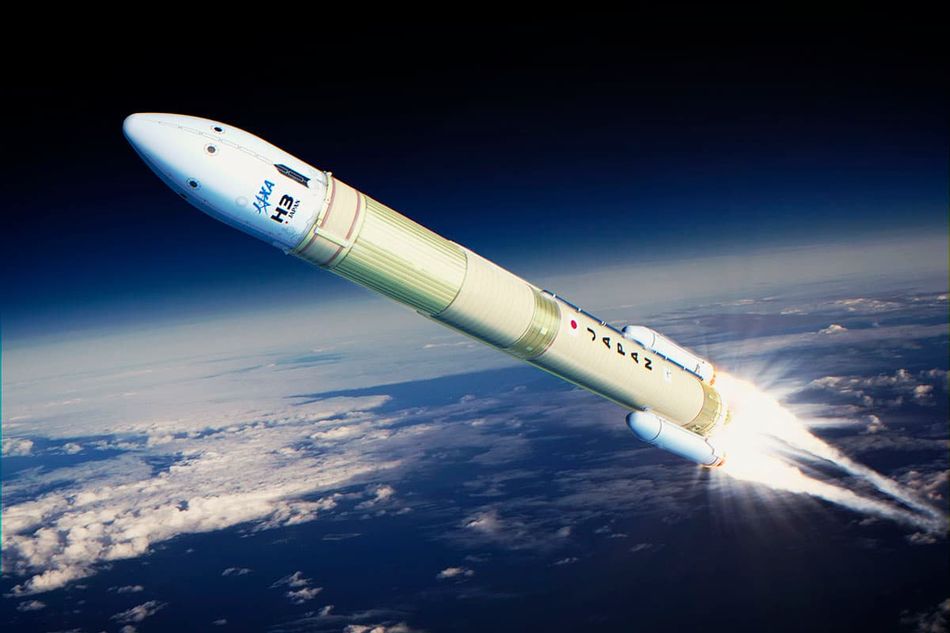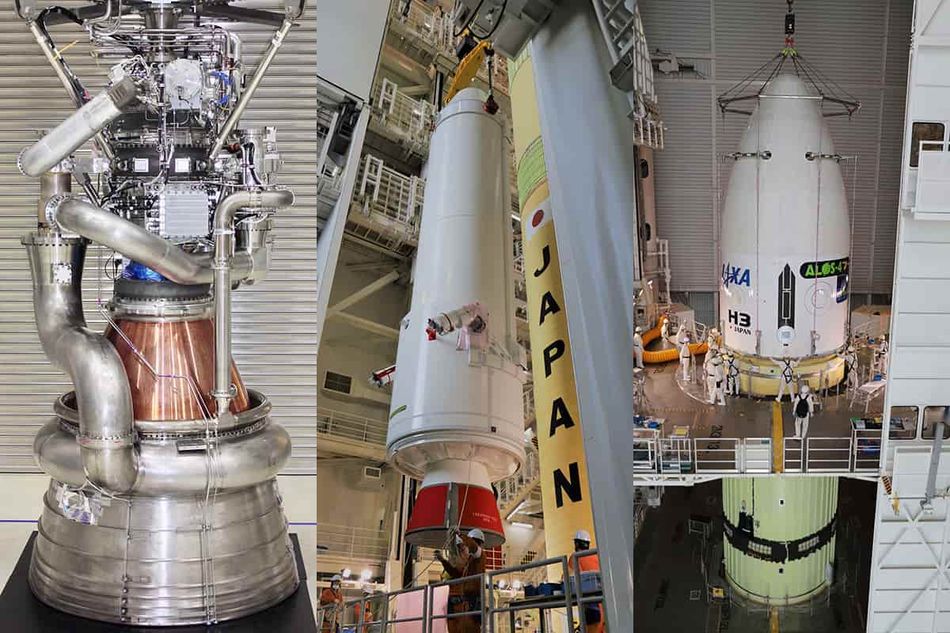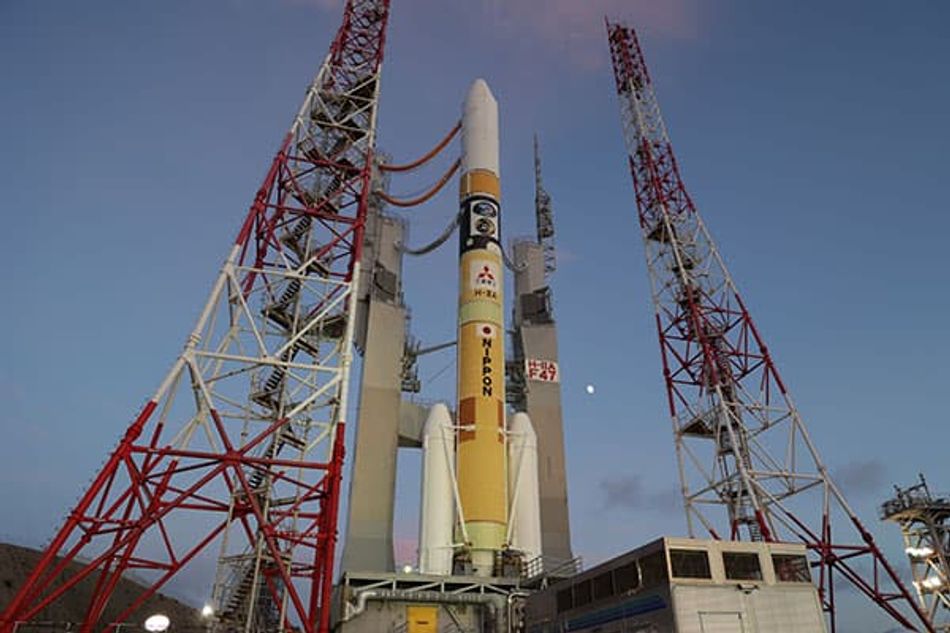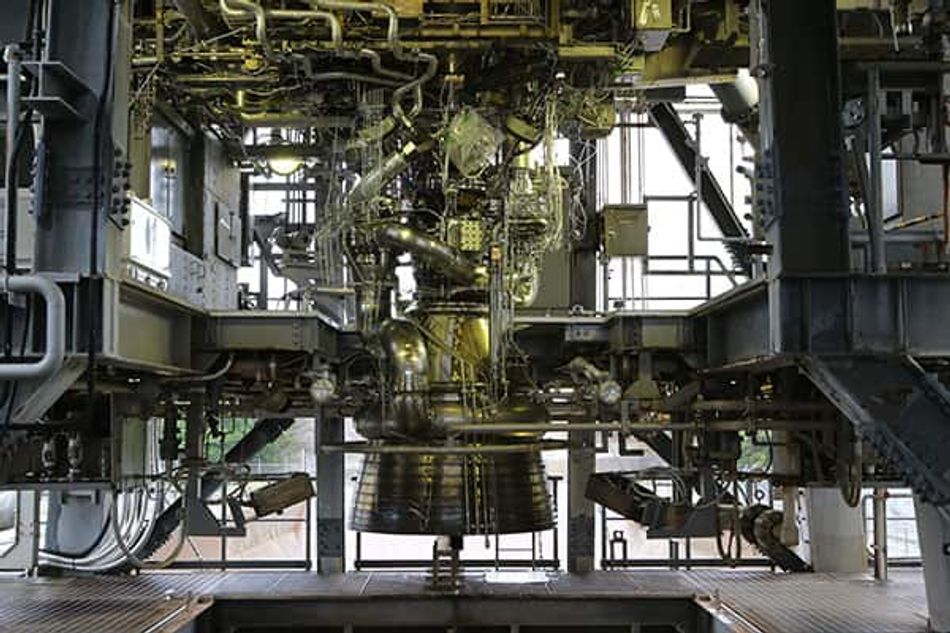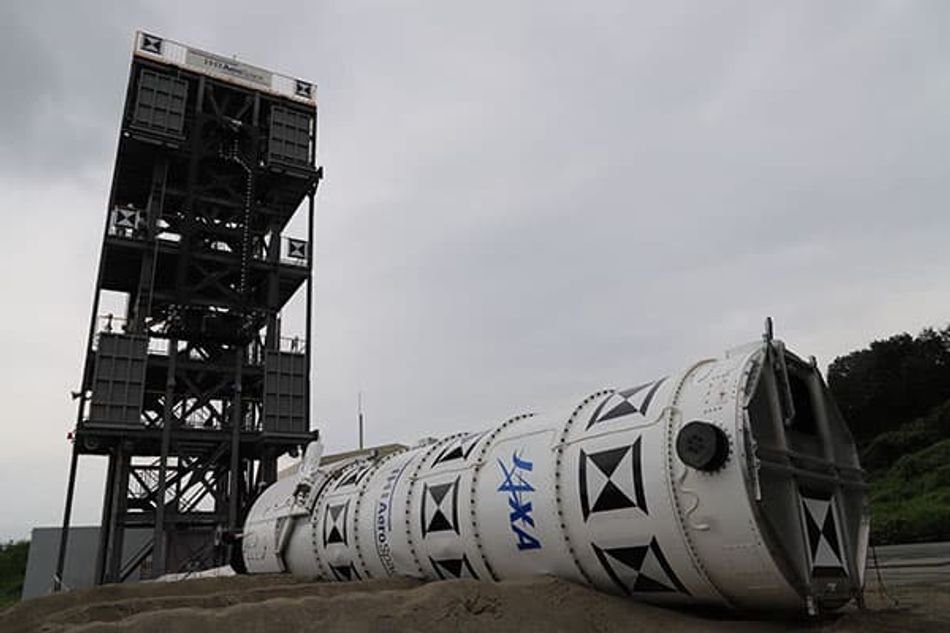Learning from the H3 Launch Vehicle: Method and Competitiveness of Combining Flexibility, High Reliability, and Thorough Cost Reduction
The H3 Launch Vehicle is a next-generation rocket. It was developed jointly by Mitsubishi Heavy Industries, Ltd. (hereinafter "Mitsubishi Heavy Industries") and the Japan Aerospace Exploration Agency (JAXA). The H3 Launch Vehicle is large for a liquid oxygen/liquid hydrogen rocket.
This article was first published on
article.murata.comThe H3 Launch Vehicle (Test Flight No. 2) was launched from JAXA Tanegashima Space Center on February 17, 2024. The flight went as planned and the vehicle successfully delivered two small secondary satellites into orbit. In recent years, many companies around the world have become involved in the space business. Accordingly, the H3 Launch Vehicle has been attracting a great deal of expectation and attention for the development of the space business in Japan.
We introduce an overview of the H3 Launch Vehicle, its airframe configuration and form, launch capabilities, and more in this article. Moreover, we look at how the H3 Launch Vehicle achieved flexibility, high reliability, and cost reduction against a background of changing demands and intensifying competition in the international space business. We also explain how electronic components from Murata Manufacturing (hereinafter "Murata") contributed to the cost reduction.
There have been more than a few cases of companies facing similar issues in various monozukuri and business operations in addition to the space business in international competition in recent years. How did the H3 Launch Vehicle overcome these difficult issues? The consistent attitude, way of thinking, and efforts of its makers may provide some clues and insights the readers of this site will find useful in your own businesses.
What Is the H3 Launch Vehicle?
To start with, we describe an overview of the H3 Launch Vehicle, the configuration and form of its airframe, examples of its launch capabilities, and more.
Overview of the H3 Launch Vehicle
The H3 Launch Vehicle is a next-generation rocket. It was developed jointly*1 by Mitsubishi Heavy Industries, Ltd. (hereinafter "Mitsubishi Heavy Industries") and the Japan Aerospace Exploration Agency (JAXA). The H3 Launch Vehicle is large for a liquid oxygen/liquid hydrogen rocket. It has a total length of approximately 63 m*2, a length close to the width of a soccer field (64 m), and a diameter of approximately 5.2 m.
The H-IIA Launch Vehicle, which has been in operation up to now, features high reliability. On the other hand, it has issues such as in terms of its launch capabilities and costs.
Accordingly, to solve these issues, the H3 Launch Vehicle was developed with the aim of it being an "easy-to-use rocket" combining the three elements of flexibility, high reliability, and low cost. This will allow Japan to maintain its independence in terms of means of transportation into space. At the same time, it will maintain and strengthen Japan's industrial base by enhancing its international competitive edge in the commercial satellite launch market.
H3 Launch Vehicle Configuration, Form, and Launch Capabilities
The H3 Launch Vehicle comprises an airframe form with the following parts that have a common airframe design.
- Number of LE-9 first-stage main engines (2 / 3)
- Number of SRB-3 solid rocket boosters (0 / 2 / 4)
- Size of the fairing (L: long / S: short)
The main feature of the H3 Launch Vehicle is that it can flexibly handle launch missions for satellites with a great variety of sizes and masses by rearranging those parts.
The H3 Launch Vehicle's airframe form is represented by a combination of the above. For example, "H3-30S" indicates there are three LE-9s, zero SRB-3s (not equipped), and an S (short) fairing. The H3-30S, the smallest form, has the capacity to launch a satellite with a mass of 4 t or more into a sun-synchronous orbit (500 km × 500 km).
In addition, it is expected that the H3-22L will be used to launch satellites into a geostationary orbit and to launch even larger satellites. Meanwhile, the H3-24L has higher launch capabilities than the H-IIA. It will be capable of launching large geostationary satellites in the 6 t mass class and multiple small satellites at once.
In this way, the H3 Launch Vehicle is capable of flexibly launching small to large satellites with the optimal form and cost for various orbits.
International Competitive Edge Required: Background to the H3 Launch Vehicle Development
We describe here some of the international competition in the background to the H3 Launch Vehicle developing aiming to be highly flexible and reliable at low cost. This includes intensifying competition in rocket launch prices around the world and changing demands.
Intensifying Price Competition in Rocket Launches
Nowadays, there is a need for low-cost rockets even more competitive in price around the world.
Costing less than the H-II Launch Vehicle, the H-IIA Launch Vehicle has also entered the commercial launch market with orders received for it from private satellite companies and other organizations both in Japan and overseas.
However, since the 2010s, new rockets with features such as low cost and high flexibility have appeared one after another due to companies in the U.S., Europe, and elsewhere around the world entering the space business. That has led to conventional Japanese rockets struggling.
In recent years, a major company in the U.S. has been planning to newly enter the commercial launch market with a rocket aiming to reduce costs by about half compared to before. Furthermore, venture businesses in various countries have also been actively developing new small and medium-sized rockets. These rockets may well become competitors in the small satellite launch market.
Changes in Satellite Launch Demands and Cost Issues
In addition to demand for larger satellites, there has been growing demand in recent years for the launch of dozens of small satellites at once. This has led to a need for rockets capable of launching satellites with a larger mass and size at lower cost.
The larger communication capacity, the longer life of satellites due to electric propulsion, and other factors have led to an increase in the dimensions and mass of geostationary satellites compared to before. Geostationary satellites with a mass of 7 to 8 t are also being launched. (The H-IIA Launch Vehicle's capacity to launch satellites into a geostationary transfer orbit is up to approximately 6 t.)
In particular, there is a need for rockets with large fairings capable of carrying satellites that have larger antennas than before to improve performance for communication and broadcasting satellites. Moreover, it is expected that there will also be an increase in demand in the future for dedicated mounting structures (dispensers) to handle satellite constellations that launch multiple small satellites at once and then operate them in formation.
Related articles: Non-Terrestrial Networks (NTNs) Employing HAPS or Artificial Satellites: Technological Trends Leading to Beyond 5G/6G (1)
Large rockets that meet such demands have higher launch costs. On the other hand, there is a pressing need to keep down costs from the perspective of price competition.
"Launch satellites with a larger mass than before at lower cost than before." The necessity to meet this contradictory requirement was in the background to the H3 Launch Vehicle development.
3. Efforts Made to Cut Costs on the H3 Launch Vehicle
As mentioned above, the H3 Launch Vehicle was developed with the aim of designing a rocket that can meet global market demands by combining the three elements of flexibility, high reliability, and low cost against a background of price competition, changing demands, and other factors. We introduce here the main efforts relating to the airframe of the H3 Launch Vehicle with a focus on the tough issue of cutting costs that is being demanded at the same time as an improvement in the transportation performance of various satellites. Together with this, we also look at the background that led to the Murata-made components being introduced into the rocket.
Thoroughly Cost Cutting in All Stages
The makers of the H3 Launch Vehicle aimed to thoroughly cut costs. Accordingly, they developed the rocket while staying conscious of how to keep down costs in all stages of conception, development, and operation. Consistent efforts were made as below in each stage.
- Conception Stage
The price requirements for each component were clarified based on the concept of reducing costs. What cost reductions were possible was carefully examined and considered over the entire supply chain (the series of processes from the procurement of materials and components to manufacturing, inventory control, sales, delivery, and consumption). - Development Stage
This technology was developed while adopting low-cost specifications in the design stage. At the same time, cost reduction was also promoted through innovations in the manufacturing method. Costs were evaluated in the design review as well. The project was carried out so that it was possible to achieve the cost determined in the concept at the conception stage. - Operation Stage
The project was operated under a plan to thoroughly cut costs by mass-producing and bulk ordering the rocket and its constituent components and by engaging in ongoing efforts to raise efficiency and make improvements.
Reducing the Number of Components and Costs of the LE-9 with 3D Modeling
For example, the expander bleed cycle*3, a result of the accumulation of proprietary technologies in the second-stage engine, has been adopted as a high-thrust engine for the first-stage engine for the first time in the LE-9 with its greater thrust than the LE-7A main engine of the H-IIA in the first-stage main engine of the H3 Launch Vehicle.
The LE-9 uses components manufactured with 3D modeling (additive manufacturing) using a 3D printer. This has reduced the number of components by about 20% at the component level compared with the conventional LE-7A. Moreover, the conventional injectors had a structure in which multiple components were manufactured by machining for 500 pieces and then joined before being attached to the main body. Therefore, processing and assembly took a great deal of time and effort. On the other hand, the overall cost was reduced by more than 50% in the LE-9 by using a 3D printer to mold the components that form the core as an integrated unit.
SRB-3 Coupling Points and Cost Reduction
The method of coupling the first-stage airframe and the SRB-A solid rocket booster was complicated in the H-IIA/B Launch Vehicle. There was an issue in that the number of coupling points and components used for coupling was extremely large. Therefore, the method of coupling and separating from the first-stage airframe was reviewed and a new, simpler method was adopted for the SRB-3 solid rocket booster in the H3 Launch Vehicle.
It became possible to manufacture in Japan the motor case, which was designed based on a U.S. motor previously. With the resulting increase in design flexibility, it was possible to adopt the optimal mechanism for the rocket booster, allowing for a simple coupling and separation mechanism. This drastically reduces the number of components used for coupling and separating. Reducing the weight has improved performance, and has also contributed to cost cutting.
Improving Efficiency, Saving Time, and Reducing Costs with Takt Production
The H-IIA Launch Vehicle was produced in a format called made-to-order production in which it was manufactured after being ordered. On the other hand, the H3 Launch Vehicle saw a manufacturing format being employed close to that of line production for general industrial products, such as automobiles and aircraft, with the time being equalized for component mounting, assembly, and inspection/shipping.
In particular, a production method was adopted in which each movement and processing is repeated synchronously with takt production with the rocket being split into four segments. This improved the efficiency of manufacturing, shortened the production time, and reduced costs.
Substantial Cost Cutting with the Introduction of Non-space Components
The valves, sensors, and electrical and electronic equipment used in conventional rockets were developed for space separately from general components. These space components are extremely expensive because they have special specifications and only a few are produced. This was one of the bottlenecks in the goal of cutting costs.
Therefore, the decision was made to use components not for space in the H3 Launch Vehicle. Introducing highly reliable and inexpensive non-space components for approximately 90% of all the components led to a significant reduction in costs compared to when using space components. This had the major effect of both improving reliability and reducing costs.
When determining the non-space components that would be used, the applicable types of components were selected based on a resistance evaluation with a radiation test. In addition, this relates to component selection standards and safety standards. This meant the evaluation on the use of non-space components was carried out by JAXA and private companies in cooperation. Murata-made non-space components are also being used in the H3 Launch Vehicle. This process has contributed to both high reliability through each private company's technological capabilities and quality control and lower prices through efficient production.
1: Mitsubishi Heavy Industries was selected by JAXA in 2014 as the prime contractor to be responsible for H3 Launch Vehicle development and launch transportation services. It is overseeing the development of the airframe.
*2: The total length of approximately 63 m refers to where the fairing is L (long). The fairing is located at the top of the H3 Launch Vehicle. It is the part that houses artificial satellites and other devices to be launched. Where the fairing is S (short), the total length of the H3 Launch Vehicle is approximately 57 m.
*3: The expander bleed cycle adopted in the LE-9 is a simple mechanism. It uses liquid hydrogen—the fuel—to cool the combustion chamber and nozzle. At the same time, it converts the hydrogen into gas, raises the temperature, and then uses that gas to operate the turbo pump that drives the engine. The efficiency is not as high as that of the two-stage combustion cycle. Nevertheless, this mechanism simplifies the structure—no pre-burner is required, for example—and reduces the number of parts over the entire engine. In addition, it is intrinsically safe in that the entire system is less liable to powering down and entering a catastrophic state such as in the event there is a propellent leak or turbo pump malfunction. Accordingly, it has the advantage of being less liable to enter an abnormal combustion state. This means it can offer both high reliability and low cost at a high level.
